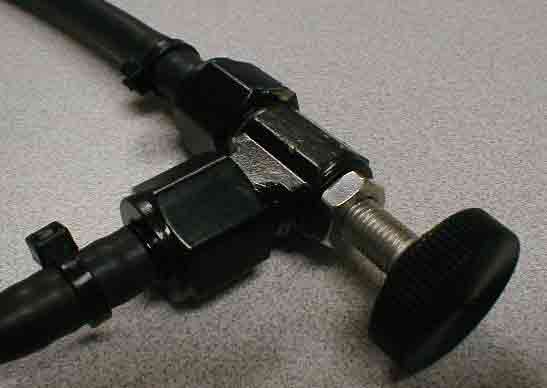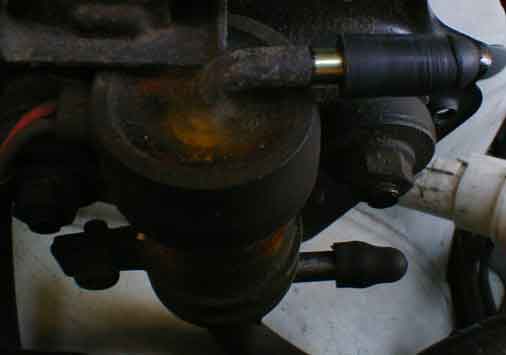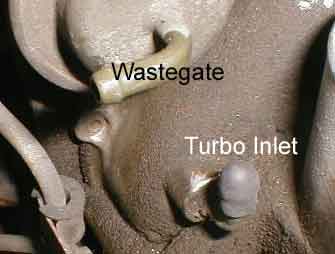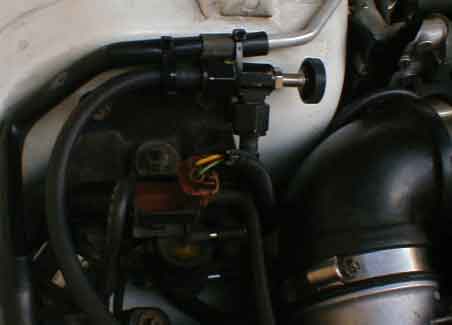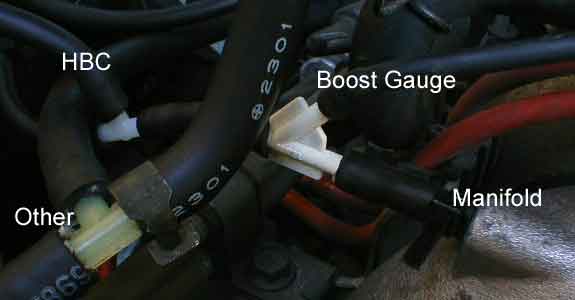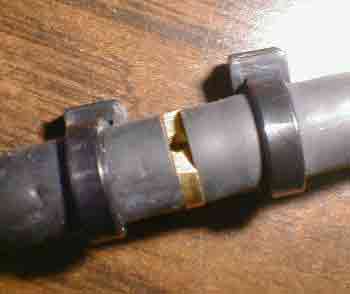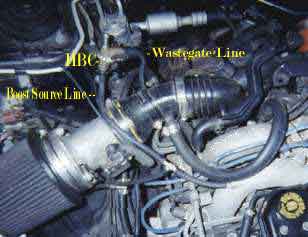|
Hallman Boost Controller How-To by Matt (Shik), pictures and editing by Dave (DLC, dackampf) Installing the Hallman Boost Controller (HBC) on the Subaru Legacy Turbo.
Disclaimer: When you begin to add boost to any car with all other things being the same, your margin of safety starts to fade. It is VERY easy to detonate a motor to death when you start fiddling with boost so be extremely cautious. Personally, if you do not have an intercooler on your Legacy Turbo yet but you want more boost, invest in an intercooler ASAP. If you do not plan on getting an intercooler, I wouldn't go over 10psi and even that may be pushing it. It is true that a few other Legacy Turbo enthusiasts have been running a bit more, but an intercooler can only help things and provide you some protection against detonation. The factory boost cut comes in around 13psi and according to some air/fuel ratios by a fellow enthusiast, the factory system still provides plenty of fuel up to that point. Still, an intercooler should be used. Disclaimer 2: If you are installing a Hallman Boost Controller, we are assuming you already have a few things. One is a free flow exhaust. Backpressure causes heat in the turbo and as small as the stock IHI turbo is already, you do not need anymore. At the least, you should have a 2.5" or 3" cat-back system with a very free-flow muffler. It would be ideal to have the downpipe since that is probably the biggest restriction in the system, but it is hard and somewhat expensive to get someone to fabricate a downpipe for you since no one offers them at this time. Secondly, you should have a performance air filter or intake system. A K&N drop-in filter will do the job just fine. And lastly, don't even think about raising the boost unless you have a good quality boost gauge such as a VDO or the like. Raising the boost until you hit boost cut, then turning it back slightly is just dumb. Don't ever rely on the factory boost cut to limit your boost, if it is electronic there is always a chance of failure. Get a boost gauge. Final Disclaimer(thankfully): I am just describing how I installed the Hallman on my Legacy. I have had it on for almost two years and have never had a problem with anything. That's not to say this is the only way or best way to do it, but it works like a charm for me. Always proceed with caution. If your blow-up your motor, it is YOUR fault, not anyone else's. BTW, if you use anything but premium fuel(92 octane or higher) in your Legacy Turbo, disregard this entire web page, you shouldn't be adding ANY boost at all to your car.
Refer to the Hallman instructions for adjusting the boost controller. One tip though, make VERY VERY small adjustments! A quarter turn on the adjusting screw can mean major boost increases so do things very slowly. I started out with the screw adjusted all the way open( about 6-7psi), took it for a ride, and began making micro turns to raise the boost to where I wanted it. It may take a few test drives but it's worth it. Also, chances are you will get more boost in 2nd, 3rd, etc. gear then you will in 1st so keep that in mind when finding the boost psi you want. And gently "roll" into the boost when doing your test drives. This way, if the boost is way to high, you can catch it before it goes ballistic. Once you've found the boost psi you want, it would be a good idea to reset the computer to let things adjust more quickly to the added air flow. Even at the stock boost level(8-9psi), I felt that the Hallman worked much better then the factory boost solenoid did. The turbo seemed to spool-up faster and hit harder. Of course "your mileage may vary", but to me, the Hallman was( and still is) well worth every penny. Some of the fastest Mitsubishis in the country use the Hallman so that alone says alot. For more information on the Hallman Boost Controller, click here.
Depending on where you mount the HBC on your Legacy, it is possible that you will only need the amount of vacumn hose before the pressure relief brass fitting. If this is the case, simply decide how much hose you will need for the wastegate, and then put the fitting somewhere along the piece of hose you will be using. Good luck!
| ||||||||||||||||||||||||

